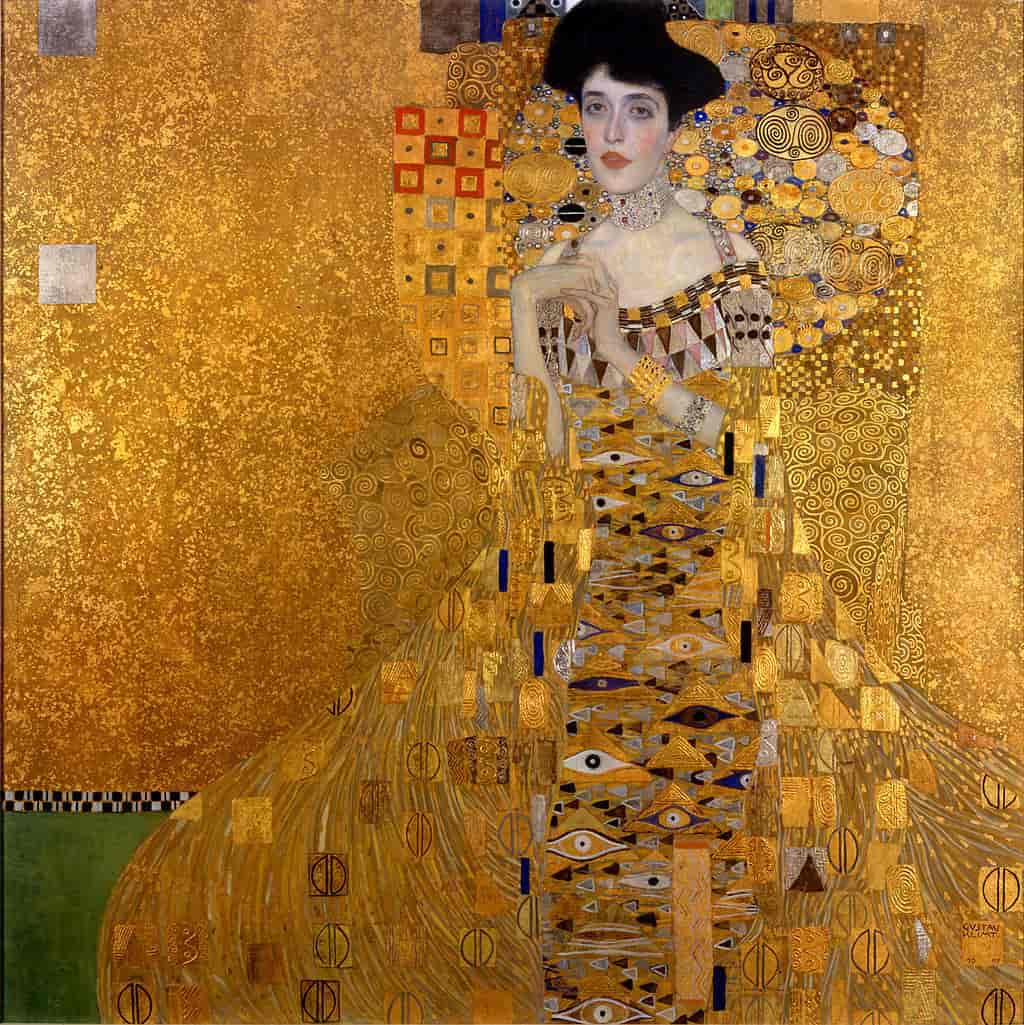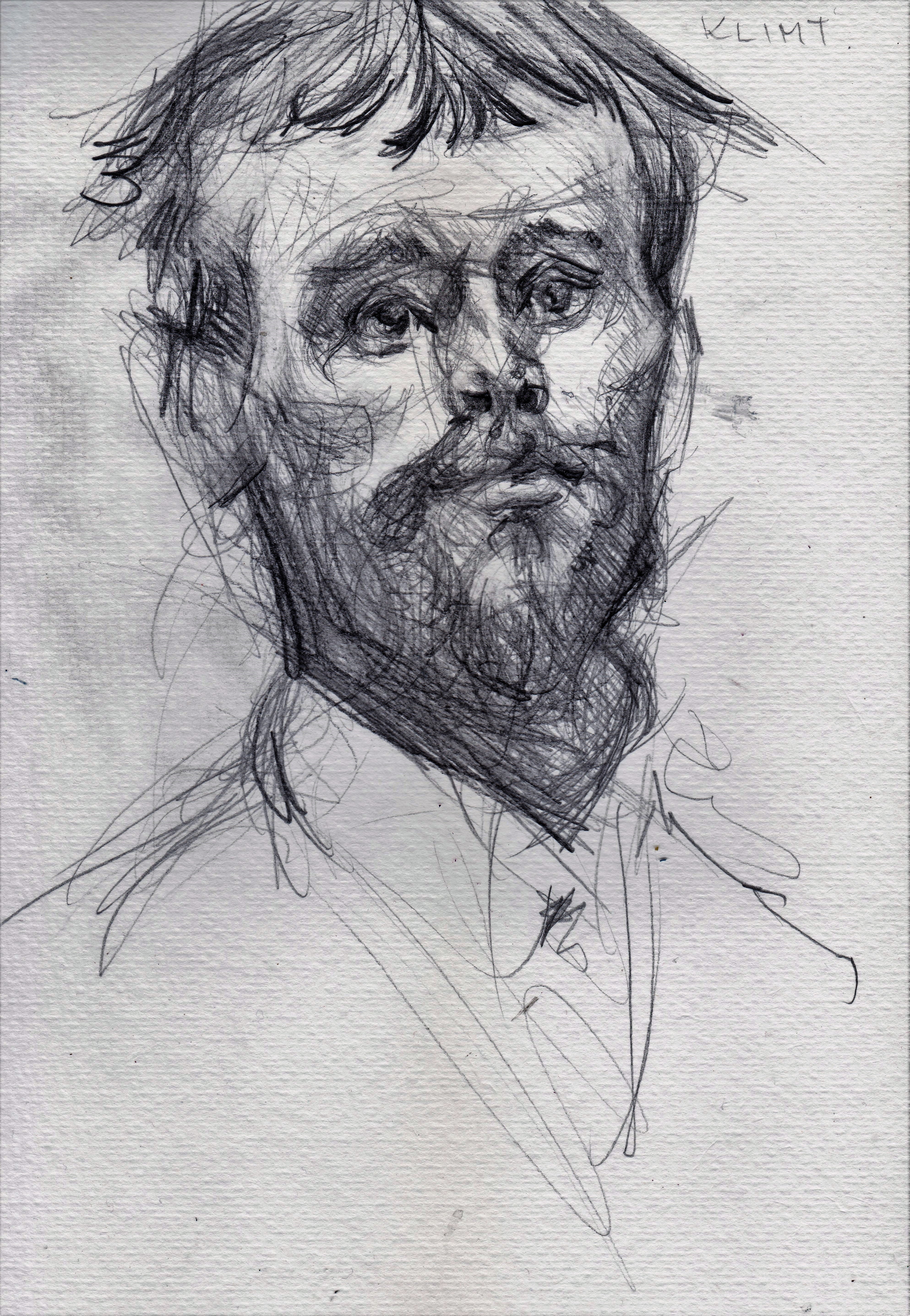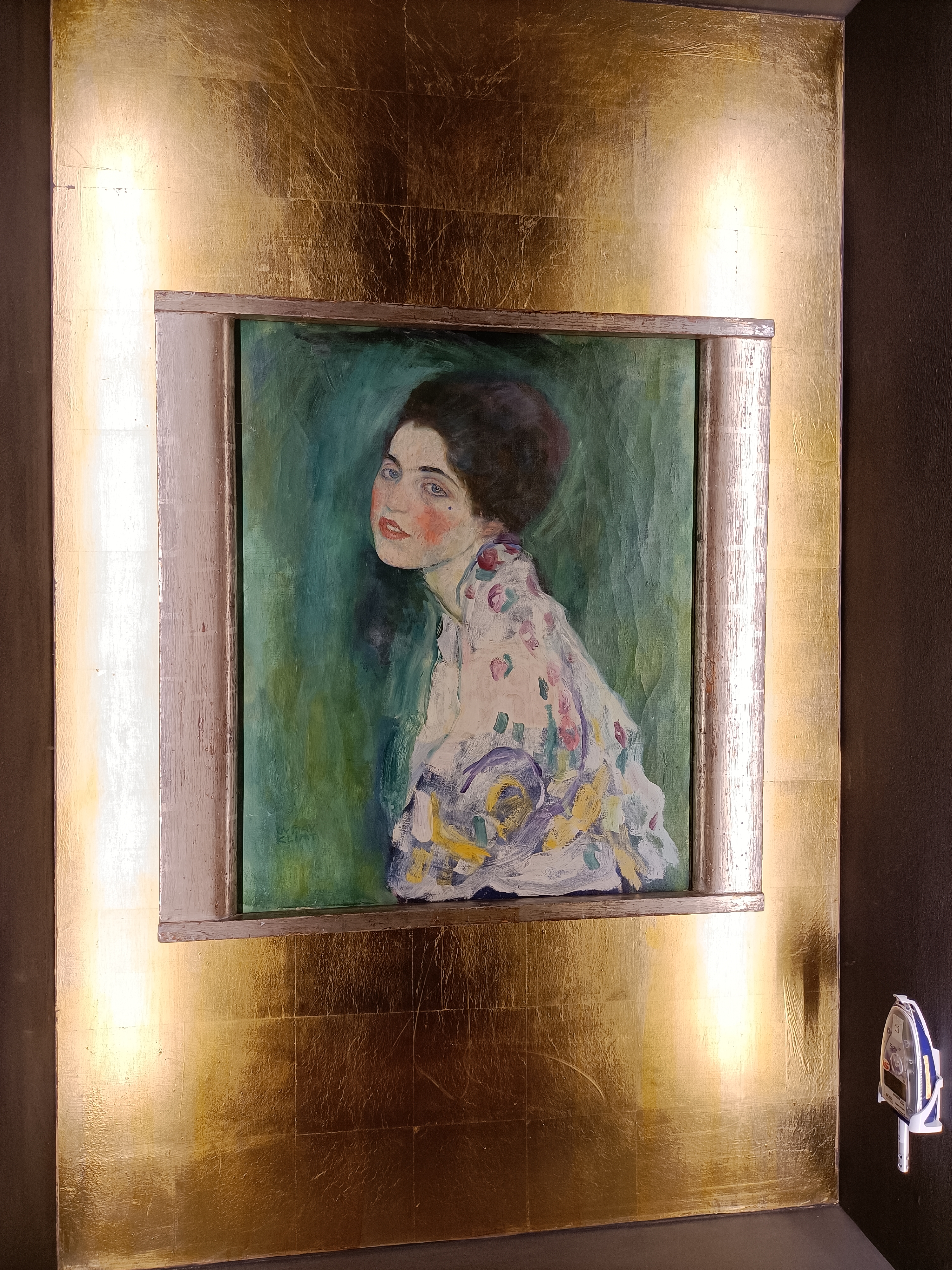Step into the world of Gustav Klimt, a visionary artist who dared to defy artistic conventions, and uncover the captivating story behind the Viennese Secession movement. Through his mesmerizing brushstrokes and unapologetically bold compositions, Klimt, along with a group of like-minded artists, embarked on a journey that paved the way for a new era in the art world. Join us as we delve into the remarkable tale of the Viennese Secession, a collective that pushed the boundaries of creativity, forever etching their mark on the artistic avant-garde. Unveiling the untold treasures of this trailblazing movement, this article invites you to explore the captivating world of Klimt and his contemporaries, where art became a revolutionary vehicle for self-expression.
1. “Breaking Tradition: Gustav Klimt’s Revolutionary Artistic Language in the Viennese Secession”
Gustav Klimt, one of the most renowned artists of the Viennese Secession, used his rebellious artistic language to challenge the traditional norms of 19th-century society. With bold strokes, intricate patterns, and an unabashed celebration of sensuality, Klimt’s artworks shattered conventional expectations and gave birth to a whole new movement in the world of art.
A pioneer of the Avant-Garde, Klimt’s artistic language embodied the spirit of liberation, individuality, and self-expression. His mesmerizing paintings often depicted powerful, ethereal women adorned with extravagant gold and intricate patterns, symbolizing the emancipation of women and the triumph of individuality over societal constraints. Klimt’s use of symbolism, enriched by mesmerizing details and bold juxtapositions, captivated audiences and challenged the conventions of the time.
Key aspects of Klimt’s revolutionary artistic language:
- Golden glamour: Klimt’s liberal use of gold leaf in his artwork added a touch of opulence, creating an undeniable allure and elevating the status of his subjects.
- Pattern play: Intricate patterns, inspired by Byzantine mosaics and Japanese woodblock prints, became a trademark of Klimt’s style, infusing his art with rich textures and mesmerizing visuals.
- Sensual symbolism: Klimt often incorporated symbolic elements into his artwork, such as snakes representing desire or geometric shapes symbolizing unity and eternity.
Klimt’s revolutionary artistic language served as a catalyst for the Viennese Secession movement, influencing future generations and leaving an indelible mark on the world of art. By breaking free from the shackles of tradition and embracing innovation, Klimt’s works continue to inspire artists and captivate art enthusiasts, even a century after his passing.

2. “Unveiling the Philosophy of the Secession: Klimt’s Visual Manifestations of the Avant-Garde Movement”
Gustav Klimt, one of the prominent figures of the Viennese Secession, used his art to convey the rebellious spirit of the avant-garde movement. His visual manifestations were a testament to the philosophy behind the secessionists’ departure from the traditional art scene. Klimt’s artistic genius unveiled a world of vibrant colors, intricate patterns, and provocative themes that captivated the audiences of his time.
In his revolutionary style, Klimt shattered the conventional boundaries of academic art, daring to explore the depths of human sensuality and the complexities of inner emotions. Through his work, he aimed to break free from the shackles of societal norms, challenging the notion of what art should be. Klimt’s innovative use of gold leaf, symbolism, and decorative motifs became synonymous with the new art movement, leaving a lasting impact on the history of art.

3. “Exploring Klimt’s Iconic Works: Masterpieces that Redefined Viennese Art”
Exploring Klimt’s Iconic Works: Masterpieces that Redefined Viennese Art
Within the realm of Viennese art, Gustav Klimt’s remarkable talent and innovative approach surpassed boundaries, leaving an indelible mark on the art world. Klimt, a prominent figure in the Vienna Secession movement, was a visionary who challenged the traditional norms of his time.
Through his iconic works, Klimt unveiled a mesmerizing blend of symbolism, sensuality, and boldness, captivating audiences with his artistic avant-garde. In his renowned painting, “The Kiss,” Klimt used intricate patterns and radiant colors to portray an intimate and passionate embrace. This masterpiece not only showcases his revolutionary use of materials but also his ability to capture emotions in a profoundly unique way.
- Symbolism: Klimt’s works are often laden with symbolism that adds depth and meaning to his art. From the intricate patterns representing the unspoken language of the unconscious mind to the iconic contrasting colors symbolizing the human spirit, each element in Klimt’s paintings tells a story beneath the surface.
- Sensuality: Klimt’s artistic style embraced sensuality, portraying the human form in all its beauty and vulnerabililty. He dared to explore the intimate aspects of relationships and the human connection, inviting viewers to embark on a visual journey where emotions are laid bare.
- Boldness: Klimt’s paintings, often met with both admiration and controversy, embody his unwavering courage to challenge societal norms. With his avant-garde approach, he aimed to disrupt the established artistic conventions of his time and create a new vision for Viennese art.
By delving into Klimt’s masterpieces, art enthusiasts not only get a glimpse into the intricate world of Viennese art but also gain a profound appreciation for the inventive spirit that defined the Vienna Secession movement. Klimt’s iconic works continue to mesmerize and inspire, serving as a testament to his contribution in redefining the course of art in Vienna and beyond.

4. “Immerse Yourself in Klimt’s Legacy: Must-Visit Museums and Exhibitions for Art Enthusiasts
Gustav Klimt and the Viennese Secession: A Glimpse into the Artistic Avant-Garde
Delve into the captivating world of Gustav Klimt, the renowned Austrian painter and prominent figure of the Viennese Secession movement. Immerse yourself in Klimt’s extraordinary legacy by exploring a selection of must-visit museums and exhibitions dedicated to his remarkable oeuvre. Embark on a visual journey through a realm where art merges with symbolism, sensuality, and symbolism, transcending traditional boundaries.
Begin your artistic pilgrimage at the Belvedere Museum in Vienna, a prominent cultural institution housing an exceptional collection of Klimt’s artwork. Marvel at “The Kiss,” one of his most iconic and recognized masterpieces, exquisitely portraying love and intimate connection. Transport yourself to a world of opulent colors, intricate patterns, and enchanting golden details that have come to define Klimt’s signature style. Don’t miss other notable pieces such as “Judith” and “Portrait of Adele Bloch-Bauer I,” each renowned for their mesmerizing allure and artistic brilliance.
- Next, venture to the Leopold Museum, which boasts an extensive collection of Viennese Secession art, including magnificent Klimt works. Gaze upon “Death and Life,” a thought-provoking piece that juxtaposes vitality with the inevitable passage of time. Admire the artist’s ability to capture the nuances of the human experience, as evident in his emotionally charged portraits and depictions of the female form.
- For a truly immersive experience, make your way to the Museum of Applied Arts, also known as the MAK, where Klimt’s influence on decorative arts and design is celebrated. Witness the intricate details of his masterful collaborations with the Wiener Werkstätte, a collective of artists and craftsmen dedicated to aesthetic innovation. Explore the harmonious fusion of art and craft in furniture, textiles, and jewelry, traceable back to Klimt’s revolutionary vision.
- Finally, don’t forget to seek out temporary exhibitions worldwide that pay tribute to Klimt’s enduring legacy. From New York’s Neue Galerie to the Belvedere Palace in Vienna, these showcases unveil rare and lesser-known works, shedding new light on Klimt’s artistic evolution and the cultural impact he left behind.
Don’t miss out on the opportunity to immerse yourself in Klimt’s mesmerizing world. Explore these remarkable museums and exhibitions that offer a glimpse into the Viennese Secession and the extraordinary genius of Gustav Klimt. Discover the emotions, symbolism, and sensuality that continue to captivate art enthusiasts across the globe.
Key Takeaways
As we conclude this vivid journey into the artistic avant-garde of Gustav Klimt and the Viennese Secession, we stand in awe of the powerful brew of rebellion and innovation that shaped this influential movement. Through their audacious departure from traditional artistic norms, Klimt and his compatriots unveiled a world brimming with passion, sensuality, and fervent creativity.
In this glimpse into Klimt’s captivating universe, we have witnessed the birth of a revolution, where art transcended its conventional boundaries to liberate the imagination. Like the phoenix rising from the ashes, the Viennese Secession erupted, sparking a blaze that forever altered art’s trajectory.
We have followed Klimt’s masterful brushstrokes, tracing the intricate patterns woven on his canvases, where every stroke seemed orchestrated by enchantment itself. It is in this mesmerizing chaos, this juxtaposition of the familiar and the extraordinary, that Klimt’s genius finds its voice. From the mystical visions of “The Kiss” to the bold iconography of “Judith and the Head of Holofernes,” his works pierce the veil of reality, whispering secrets only visible to the truly awakened soul.
Yet, let us not forget the collective spirit fueling Klimt’s quest for artistic liberation. The Viennese Secession, a congregation of visionaries, united by their shared yearning for artistic freedom, dared to challenge a rigid establishment. Through their fearless commitment to innovation, they carved a niche for future generations to explore and redefine art’s purpose.
As we bid adieu to this chapter in art’s history, we are left with an everlasting imprint on our cultural tapestry. Klimt’s radiant strokes radiate a timeless allure, his audacity continues to inspire budding artists, and the Viennese Secession remains a lighthouse guiding those who refuse to conform.
In this incomparable journey, we have delved into the kaleidoscope of Klimt’s imagination, studied the philosophy of the Secession, and marveled at the boundless depths of human creativity. So, as we turn our gaze from these incandescent canvases and venture back into the realm of the ordinary, let us remember that art is an expression of our shared human experience, a testimony to our innate desire to transcend the mundane and soar to unimaginable heights.
Gustav Klimt, the Viennese Secession, their audacity, and their everlasting impact serve as a poignant reminder that art can ignite revolution, provoke introspection, and ultimately shape the very fabric of our existence. As we carry their spirit with us, may their daring visions inspire us to embrace our creative potential and forge our path towards a future yet to be painted.

